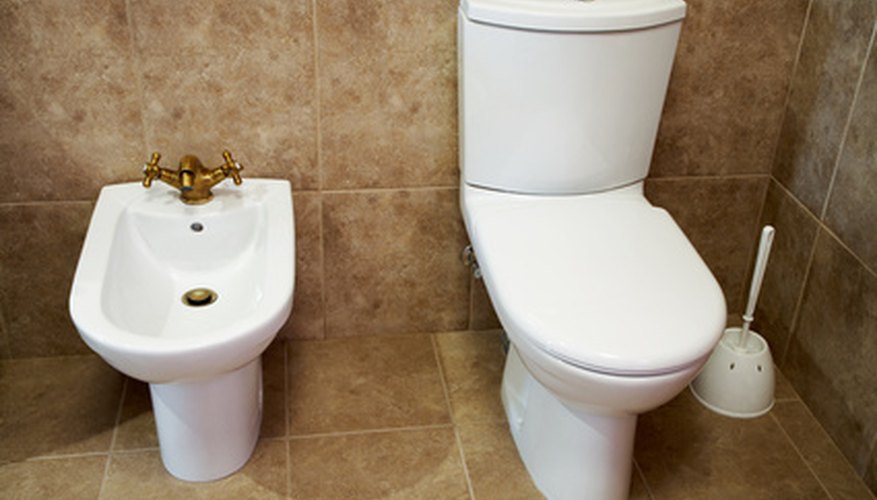A bidet is a type of sink, mounted low next to a toilet that is used to wash the anus and genitalia after using the toilet. Originating in France, bidets have two basic designs: one that is similar to a tap where water flows into the bowl, the other with a nozzle that projects water onto the area being cleaned. Washing with water after toilet use is common in many parts of the world, and there are many alternatives to the bidet.
Hand Sprayer
Common to bathrooms in countries like India and Pakistan where washing with water is the normal practice, a hand-held sprayer is a hose attachment with a spraying head nozzle that is hooked beside the toilet. Hand-held sprayers allow users to clean the entire anal and genital area in moments, and the water pressure is effective at cleaning away debris without the use of a hand. Hand sprayers are available in many different forms and are easy to install in most bathrooms. Portable travel sprayers are available.
- Common to bathrooms in countries like India and Pakistan where washing with water is the normal practice, a hand-held sprayer is a hose attachment with a spraying head nozzle that is hooked beside the toilet.
In-Toilet Attachments
Many makes of toilet attachments are available that spray water in the direction of the anus from within the toilet bowl. Most of these attachments are electrically powered and spray water in an arc when a button is pressed or lever is pulled. Toilet attachments are somewhat limited in their range as they are fixed at a particular position and angle in the toilet.
Toilet-Bidets
Some toilets are a bidet and toilet combined. These have features of both the bidet and the toilet, with inbuilt sprayers in the toilet bowl that are placed at the rear, front or both. As with the in-toilet attachments a button usually electrically powers inbuilt sprayers---some even contain heating mechanism to dry the area after washing.
Toilet 'Watering Can'
In countries where washing with water is common, but there is widespread underdevelopment, a toilet watering can is used as an alternative to the more expensive bathroom attachments that require plumbing or electricity. Usually made from plastic, a toilet watering can looks much the same as a garden watering can, although most have single spouts, rather than a showerhead attachment. Toilet watering cans are usually only big enough to hold water for one wash (one or two litres at most), so are normally accompanied by a larger container of water for refilling the watering can.
